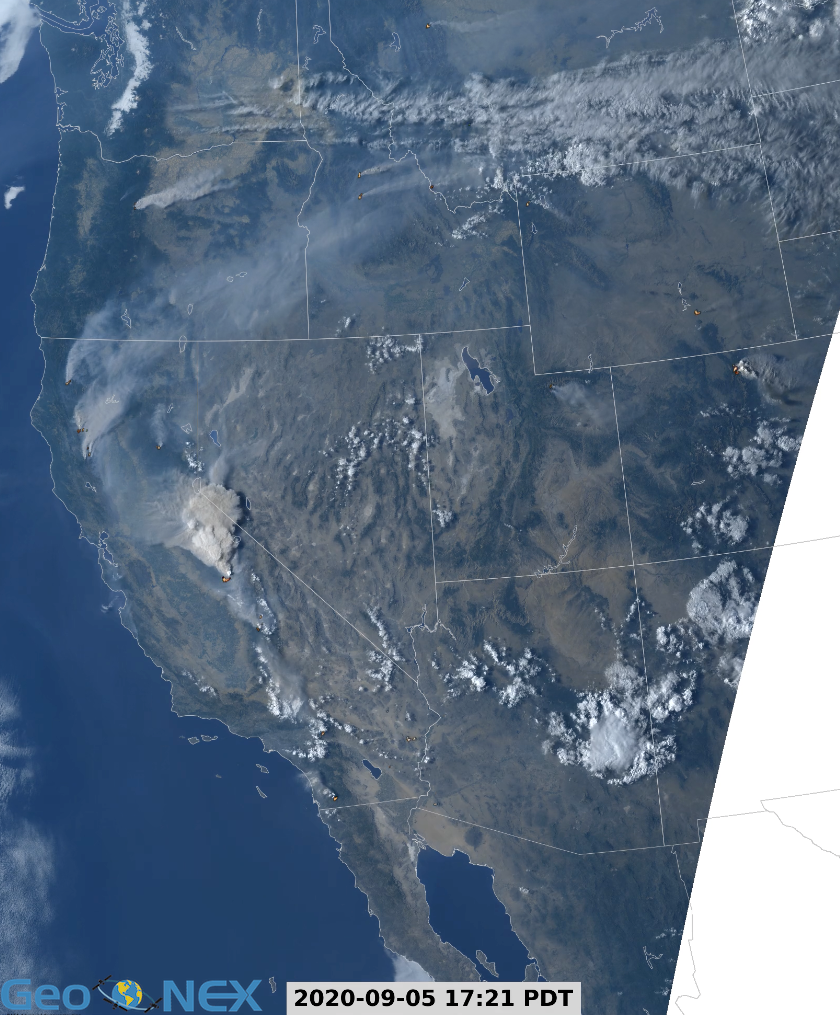Fire Behavior Modeling
NEX seeks to advance wildfire research and facilitate innovation across the wildfire research community. We foster and promote interdisciplinary research, cultivate partnerships between scientists and engineers from academia, government agencies, and industry, and work towards the goal of improving wildfire monitoring and predicting ignition and spread. NEX provides the research community with large-scale computing capabilities, open data, modeling, and machine learning to facilitate complex data integration and behavior modeling to detect wildfire ignition and spread. The integration of Geostationary (GEO) data, such as the GOES-R series platforms, and low earth orbit (LEO) platforms, such as VIIRS, provides a basis for this work. At NEX, researchers use modeling systems such as Weather Research and Forecasting (WRF) model and surface fire behavior model, called SFIRE, to estimate the rate of spread using fuel properties, wind velocities, and terrain data.
The community is developing new methods for detecting fire ignition events with near real-time observations from space-based platforms (GEO/LEO) and aircraft observations to research urgent computing for event-driven wildfire modeling to support tactical and strategic wildfire management decision-making.





























